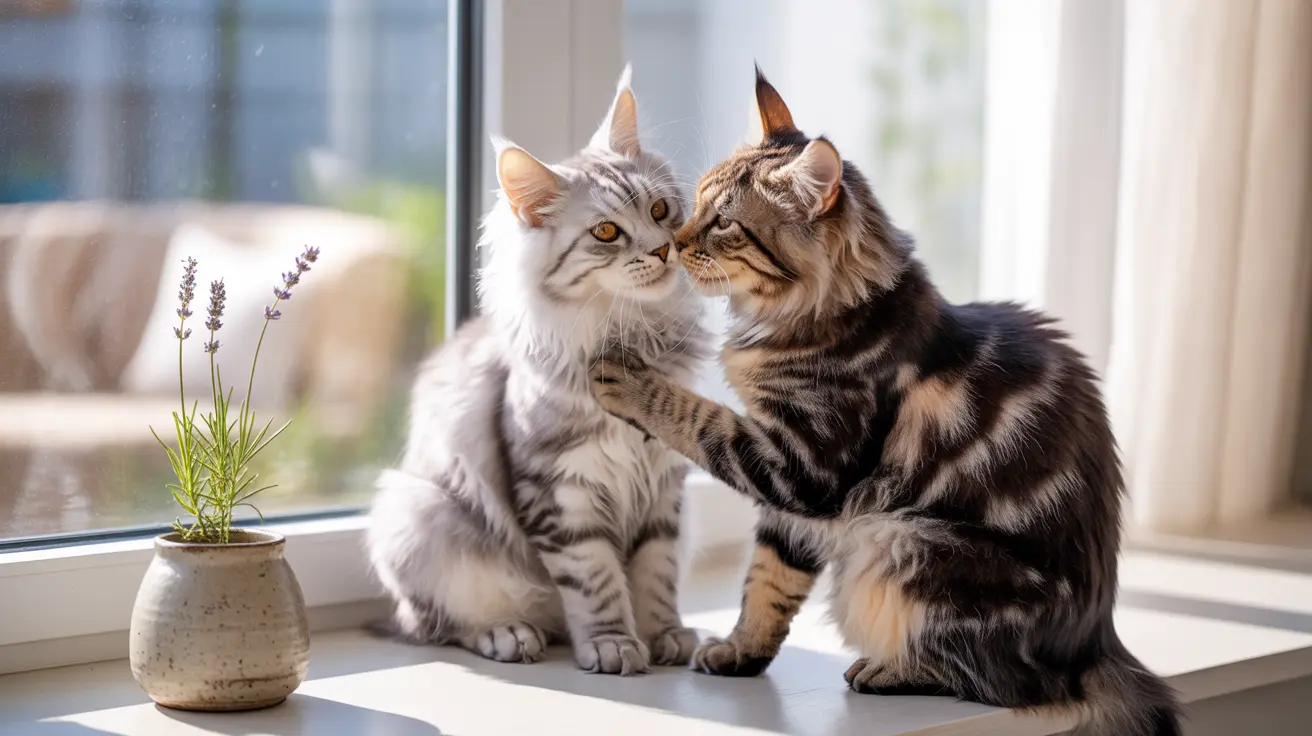The Social Benefits of Multiple Cats
One of the most significant advantages of having two cats is the social enrichment they provide for each other. Cats often form deep bonds with their feline companions, engaging in mutual grooming, playing together, and even sleeping side by side. This natural companionship can significantly reduce stress and anxiety, particularly when owners are away at work.
Research shows that paired cats typically display fewer behavioral problems related to loneliness, such as excessive meowing or destructive scratching. They keep each other physically active and mentally stimulated through interactive play, which contributes to better overall health.
Practical Advantages for Cat Parents
Having two cats can actually simplify some aspects of pet ownership. When cats have a built-in playmate, they're less likely to demand constant attention from their humans. This self-entertainment factor can be especially beneficial for busy households where owners can't always provide extended play sessions.
Additionally, cats can learn positive behaviors from each other, with older cats often teaching younger ones important social skills and household routines. This natural mentorship can make training and socialization easier for pet parents.
Financial Considerations and Resource Requirements
The financial impact of having two cats cannot be overlooked. Every aspect of cat care essentially doubles - from food and litter to veterinary expenses and pet insurance. Regular costs include:
- Twice the amount of quality cat food
- Additional litter and litter boxes
- Multiple sets of supplies (beds, scratching posts, toys)
- Doubled veterinary expenses for routine care
- Potential emergency medical costs
It's recommended to maintain an emergency fund specifically for unexpected veterinary expenses, as having two cats increases the likelihood of facing medical costs at some point.
Space and Environmental Needs
Creating a harmonious environment for two cats requires careful consideration of space and resources. Each cat needs:
- Their own feeding station
- Multiple litter boxes (the general rule is one per cat plus one extra)
- Separate resting areas and hiding spots
- Individual scratching posts and perches
- Adequate space to establish territories
The layout of these resources is crucial - they should be distributed throughout the home to prevent territorial disputes and ensure easy access for both cats.
Managing Potential Challenges
While having two cats can bring many joys, it's important to be prepared for potential challenges. Common issues include:
- Initial adjustment periods and potential conflicts
- Territory-related disputes
- Competition for attention or resources
- Increased cleaning requirements
- More complex health monitoring
Success often depends on proper introduction techniques, maintaining individual attention for each cat, and addressing any issues promptly with appropriate solutions or veterinary guidance.
Frequently Asked Questions
What are the main benefits of having two cats for their social and emotional well-being?
Two cats provide each other with companionship, reducing loneliness and anxiety. They engage in mutual grooming, play together, and offer emotional support, leading to better mental health and reduced stress-related behaviors.
How much extra space and resources do I need when adding a second cat to my home?
You'll need additional feeding stations, litter boxes (one per cat plus one extra), separate sleeping areas, multiple scratching posts, and various perches or hiding spots. Ensure these resources are spread throughout your home to prevent territorial conflicts.
What are the common challenges or risks of owning two cats together?
Common challenges include potential territorial disputes, doubled expenses, increased cleaning requirements, more complex health monitoring, and possible personality conflicts between cats. Some cats may also compete for owner attention.
How can I successfully introduce a new cat to my existing feline to reduce conflicts?
Introduce cats gradually through scent exchange, visual contact with a barrier, and short supervised meetings. This process can take several weeks, and it's important to maintain separate resources during the introduction period.
How does having two cats impact veterinary care costs and pet maintenance?
Veterinary costs effectively double with two cats, including routine check-ups, vaccinations, and potential emergency care. Monthly expenses for food, litter, and supplies also increase, and you may need to budget for additional pet insurance coverage.






